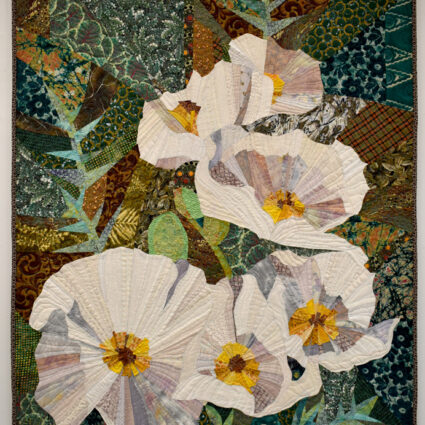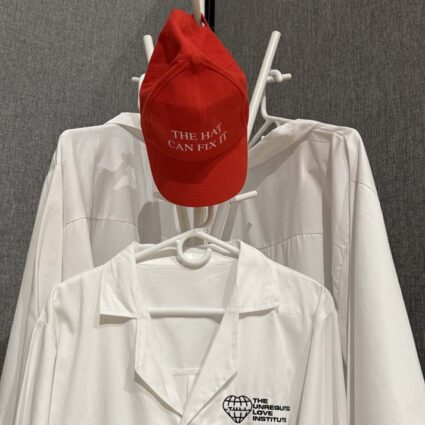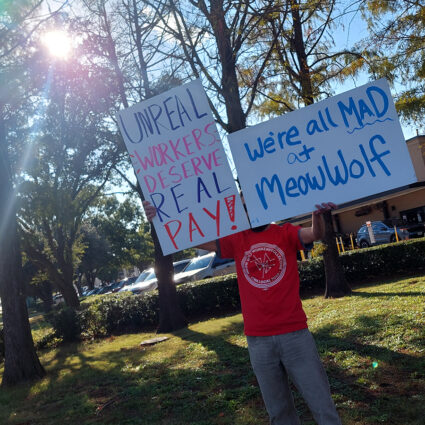Pandemic precautions, new arts leadership, and the growing footprint of developers leads to uncertainty for Tempe, Arizona artists, who wonder what’s next for the local arts scene.
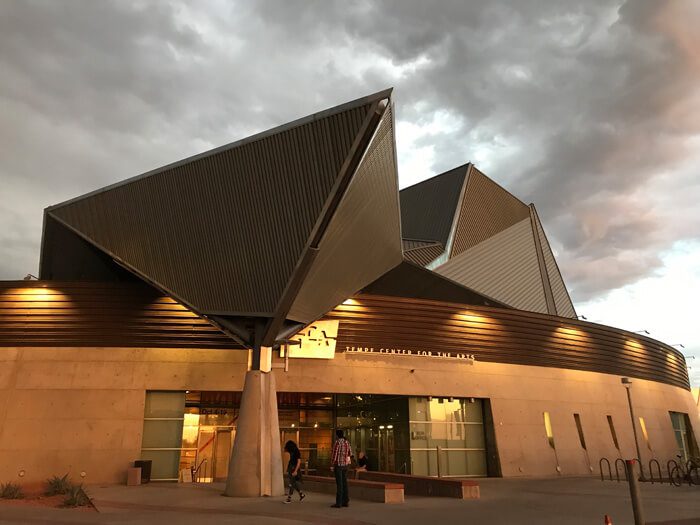
TEMPE, AZ—Dramatic angular lines punctuate the skyline where Tempe Center for the Arts mirrors the shape and texture of a nearby butte. The architectural grandeur of the $65 million, Tempe Town Lake-adjacent venue signals the value that this city, located just east of Phoenix, places on arts and culture.
Even so, it’s just one piece of a rapidly evolving arts scene where other factors, including pandemic precautions, new arts leadership, and the growing footprint of developers, also hold significant sway.
Tempe’s cultural landscape is at a pivot point, according to Robert Moore, who served for several years on the city’s municipal arts commission. Today, he coordinates an ongoing art project at a strip mall called Danelle Plaza, where artists fill empty storefronts and exterior walls with murals and installations.
Most recently, Laura Spalding Best added her Rise installation, first created for the city, to the mix. The piece includes urban desert landscapes painted on dozens of decommissioned traffic signs that hint at the transformation quietly taking place in this city.
Even this plaza, where people gather at the southwest corner of Mill and Southern avenues for live music, alternative art events like Tempe-a-Gogh-Gogh, and impromptu encounters with offbeat works of art, is a work in progress.
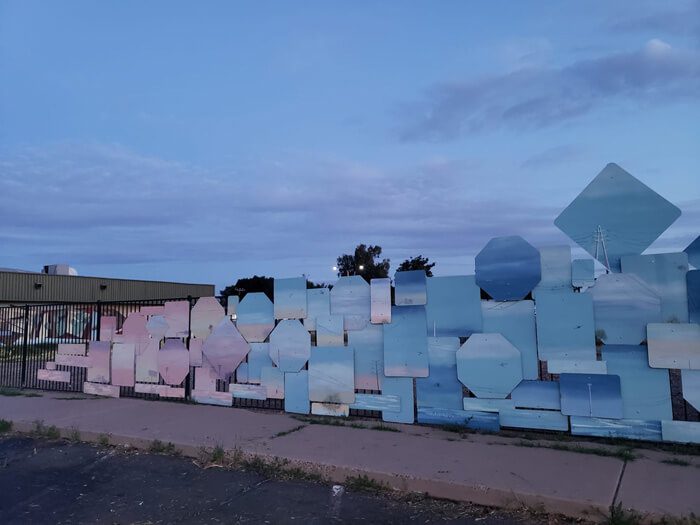
A central portion of the plaza’s parking lot is owned by the city, which recently sought a developer to create affordable housing on the site. The city nixed the request for qualifications after getting two proposals but could issue another one in coming months. At least one developer says he’s working independent of that process and hopes to create a mixed-used development at Danelle Plaza, where existing businesses include Yucca Tap Room, Double Nickels Collective, and Q & Brew.
Whatever the outcome, Moore hopes the city amplifies the grassroots arts scene instead of fueling gentrification.
“One of my biggest fears is that the city will see Danelle Plaza as a blank slate instead of looking at it as a community-based entity with its own history and significance,” he says.
Meanwhile, it appears that a plan to create sixty-eight units of artist live/work housing in Tempe will be delayed because the state of Arizona didn’t select the developer, Minnesota-based nonprofit Artspace, to receive a low-income housing tax credit this year. A city contract allows Artspace to apply again next year, but the agreement will be terminated if the credit doesn’t come through in 2022.
It’s just one more unknown for artists living and working in Tempe, where creative offerings include a longstanding arts festival but independent galleries are rare.
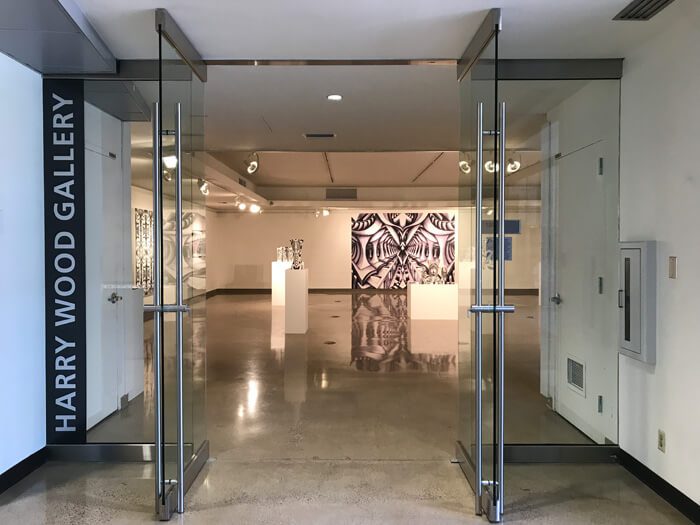
Arts leadership is shifting in the region as well.
The main campus of Arizona State University in Tempe is home to the ASU Art Museum as well as the ASU School of Art, which offers both undergraduate and graduate programs, and operates exhibition spaces on the Tempe campus and downtown Phoenix.
The school announced in April that its director of two years would be leaving to become the dean for an ASU college focused on integrating science and arts. Although the School of Art named an interim director, it hasn’t announced the selection of a new director. ASU’s fall 2021 classes are scheduled to begin August 19.
In addition, leadership changes are happening at Arizona Commission on the Arts, a state agency and National Endowment for the Arts affiliate. Recently, Jaime Dempsey left her position as executive director to become a senior vice president with a statewide philanthropic organization. Like ASU, the commission named an interim executive director pending the completion of its search process.
Tempe recently hired Brendan Ross to serve as deputy community services director for arts and culture, a role previously filled by Ralph Remington, who now serves as director of cultural affairs for the San Francisco Arts Commission.
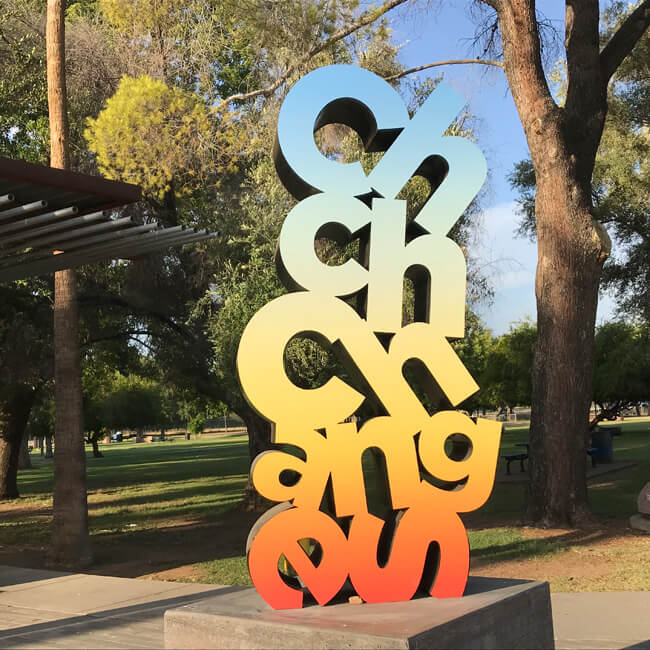
Ross oversees all facets of Tempe arts and culture, including the nearly fourteen-year-old Tempe Center for the Arts, which is home to a formal gallery, two theaters, numerous works of public art, and common spaces for art activities.
It’s the leadership change most likely to directly impact Tempe artists, but it’s too soon to know how that will play out. Ross is still exploring the local arts landscape after relocating from Australia, where he worked for many years in visual and performing arts.
“I see a lot of opportunities to continue to grow a sense of local identity and quality of life,” Ross says of the Tempe arts scene. “We’re all working together as an arts ecosystem.”
Danelle Plaza advocate Moore hopes more artists will get involved in city life, especially now that so many changes are in the works. “We need artists to help make sure the Tempe arts scene stays organic and authentic,” says Moore.
